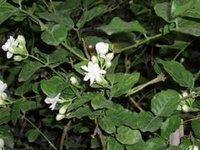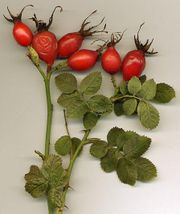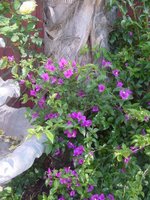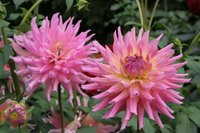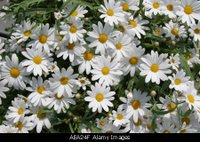Rugosa Rose

Rugosa Rose or Japanese Rose (Rosa rugosa) is a rose native to eastern Asia, in northeastern China, Japan, Korea and southeastern Siberia, where it grows on the coast, often on sand dunes. The Japanese name is (ハマナス(hamanasu)), meaning "shore pear".
It is a suckering shrub which develops new plants from the roots and forms dense thickets 1–1.50 m tall with stems densely covered in numerous short, straight thorns 3-10 mm long. The leaves are 8–15 cm long, pinnate with 5–9 leaflets, most often 7, each leaflet 3–4 cm long, with a distinctly corrugated (rugose, hence the species' name) surface. The flowers are pleasantly scented, dark pink to white, 6–9 cm across, with somewhat wrinkled petals; flowering is from summer to autumn (June to September in the northern hemisphere).
The edible hips are large, 2–3 cm diameter, and often shorter than their diameter, not elongated like most other rose hips; in late summer and early autumn the plants often bear fruit and flowers at the same time. The leaves typically turn bright yellow before falling in autumn.
[edit]Cultivation and usesRugosa Rose is widely used as an ornamental plant. It has been introduced to numerous areas of Europe and North America. It has many common names, several of which refer to the fruit's resemblance to a tomato, including beach tomato or sea tomato; saltspray rose and beach rose are others.
The sweetly scented flowers are used to make pot-pourri in Japan and China, where it has been cultivated for about a thousand years.
Rugosa rose hybridises readily with many other roses, and is valued by rose breeders for its considerable resistance to the diseases rose rust and rose black spot. It is also extremely tolerant of seaside salt spray and storms, commonly being the first shrub in from the coast. It is widely used in landscaping, being relatively tough and trouble-free. Needing little maintenance, it is suitable for planting in large numbers; its salt-tolerance makes it useful for planting beside roads which need deicing regularly.
